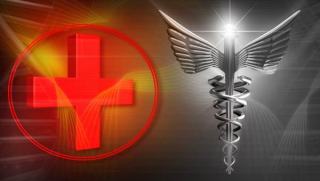Warnings
RISK WARNINGS: MEDICAL ABORTION WARNINGS
 |
What Are The Risks?
Learn About Possible Fatal Warnings.
|
On This Page:
WARNINGS – Q & A
What important WARNING information should a patient know about medical abortion with mifepristone and misoprostol?
WARNINGS describe significant adverse reactions, including any that are potentially fatal, are serious even if infrequent, or can be prevented or mitigated through the appropriate use of the drug. (1)
“A drug’s labeling must be revised to include a WARNING about clinically significant hazard as soon as there is a reasonable evidence of a causal association with a drug; a causal relationship need not have been definitely established.” (1)
Patients must be monitored and undergo appropriate medical evaluation and intervention should any of the following serious adverse events occur following a spontaneous, surgical, or medical abortion, including following Mifeprex (mifepristone) use: (2)
- Vaginal Bleeding
- Infection and Sepsis
- Confirmation of Pregnancy Termination
- Ectopic Pregnancy
Misoprostol administration to women who are pregnant can cause abortion, premature birth, or birth defects. (3)
Uterine rupture has been reported when Cytotec (misoprostol) was administered in pregnant women to induce labor or to induce abortion beyond the eighth week. (3)
Patients must be advised of the abortifacient property of misoprostol and warned not to give the drug to others. (3)
For More Information:
VAGINAL BLEEDING
What important medical abortion WARNING information should a patient know about the risk of prolonged heavy bleeding?
Information on vaginal bleeding is included in the “BOXED WARNING” to highlight the serious nature of this event if not promptly treated. The WARNINGS section states that vaginal bleeding occurs in almost all patients during the treatment procedure. (4) (5)
"Prolonged heavy bleeding (soaking through two thick full-size sanitary pads per hour for two consecutive hours) may be a sign of incomplete abortion or other complications."
Prompt medical or surgical intervention may be needed to prevent the development of hypovolemic shock (rapid fluid loss that can result in multiple organ failure) (see BOXED WARNINGS). (2) (5)
The average bleeding lasts nine to sixteen (9-16) days with ranges up to 69 days. (2)
Approximately, 80 out of every 1000 patients may experience some type of bleeding for 30 days or more. (2)
Based on the U.S. clinical trials the following excessive vaginal bleeding risks were reported: (2)
- 48 in 1000 patients received administration of uteronics drugs to stimulate uterine contractions;
- 55 in 1000 patients received vasoconstrictor drugs to reduce blood flow;
- 10 in 1000 patients received intravenous fluids;
- 1.6 in 1000 patients received blood transfusions;
- 10 in 1000 patients required curettage by surgical scraping and scooping to the lining of the uterus.
Patients should seek immediate medical attention if they experience prolonged heavy vaginal bleeding following a medical abortion. (4)
For More Information:
INFECTION & SEPSIS
What does the FDA know about serious infections reported with mifepristone and misoprostol use?
Information on infection and sepsis is included in the BOXED WARNING and WARNINGS sections of the Prescribing Information as well as the Medication Guide and the Patient Agreement. (4) (5)
FDA has been informed of eight deaths in the United States due to serious infections following medical abortion with mifepristone and misoprostol. (6)
FDA has concluded these deaths may possibly be related to the use of these drugs. These women died from sepsis (serious infection involving the bloodstream). (6)
Seven cases were found to involve infection with bacteria known as Clostridium sordellii and one case involved infection with Clostridium perfringens. (5) These bacteria can produce toxins that are rapidly fatal. (6)
A sustained fever of 100.4 degrees Fahrenheit or higher, severe abdominal pain, or pelvic tenderness in the days after taking Mifeprex (mifepristone) and misoprostol may be an indication of infection. (2)
All providers of medical abortion and emergency room healthcare practitioners should investigate the possibility of sepsis in women who are undergoing medical abortion and present with nausea, vomiting, or diarrhea and weakness with or without abdominal pain. (6) These symptoms, even without a fever, may indicate a hidden infection. (6)
Reports of fatal sepsis in women undergoing medical abortion are very rare (1 in 100,000). (6)
For More Information:
CONFIRMATION OF PREGNANCY TERMINATION
Why is it important to return for a follow-up visit after taking mifepristone and misoprostol?
Information on confirmation of pregnancy termination is included in the WARNINGS sections of the Prescribing Information as well as the Medication Guide and the Patient Agreement.
Patients should be scheduled for and return for a follow-up visit at approximately 14 days after administration of Mifeprex (mifepristone) to:
- Confirm that the pregnancy is completely terminated;
- Assess the degree of bleeding.
Lack of bleeding following treatment usually indicates medical abortion failure; however, prolonged or heavy bleeding is not proof of a complete abortion.
"50 to 80 women out of 1000 may experience medical abortion failure."
Medical abortion failures should be managed with surgical termination.
If the pregnancy continues after any part of the treatment, there is a chance that there may be birth defects.
If the pregnancy continues after treatment with Mifeprex (mifepristone) and misoprostol, the patient will need talk with the provider about her choices, which may include a surgical procedure to end the pregnancy.
For More Information:
ECTOPIC PREGNANCY
What is a ruptured ectopic pregnancy and how often does it happen?
Information on ectopic pregnancy is included in the WARNINGS section to alert physicians to the possibility that a patient who is undergoing a medical abortion could have an undiagnosed ectopic pregnancy since some of the expected symptoms of a medical abortion may be similar to those of a ruptured ectopic pregnancy. (4) (5)
The Mifeprex (mifepristone) labeling states that mifepristone and misoprostol should not be used for the termination of pregnancy (See CONTRAINDICATIONS) in patients with confirmed or suspected ectopic pregnancy. (5) (6)
Ectopic pregnancy is a complication of pregnancy itself rather than a complication resulting from medical abortion treatment. (7)
An ectopic pregnancy is any pregnancy that develops outside of the womb. It occurs in 2% of all pregnancies. The ectopic pregnancy is usually located in one of the fallopian tubes. As the fetus grows, it damages the tube, causing it to rupture (burst) and bleed. (6)
It is important to discover and treat ectopic pregnancies early because: (6)
- Almost 40% of ectopic pregnancies rupture suddenly, causing pain and dangerous bleeding in the abdominal cavity.
- The other 60% usually cause slow bleeding in the abdomen.
- Ruptured ectopic pregnancies can be fatal.
The presence of an ectopic pregnancy may have been missed even if the patient underwent ultrasonography prior to being prescribed Mifeprex. (2)
For More Information:
MISOPROSTOL WARNINGS
What important WARNINGS should a patient know about misoprostol?
See Boxed WARNINGS.
Misoprostol administration to women who are pregnant can cause abortion, premature birth, or birth defects. (3)
"Uterine rupture has been reported when Cytotec (misoprostol) was administered in pregnant women to induce labor or to induce abortion beyond the eighth week." (3)
Patients must be advised of the abortifacient property of misoprostol and warned not to give the drug to others. (3)
For More Information:
1. U.S. Department of Health & Human Services. CFR – Code of Federal Regulations, Labeling, Title 21, Volume 4, 21CFR201.57. FDA, U.S Food and Drug Administration. [Online] April 1, 2010. [Cited: August 1, 2011.] http://www.accessdata.fda.gov/scripts/cdrh/cfdocs/cfcfr/CFRSearch.cfm?fr=201.57.
2. U.S.Department of Health & Human Services. Drugs@FDA, Label and Approval History, Mifepristone Labeling Revision. FDA, U.S. Food and Drug Administration. [Online] April 27, 2009. [Cited: July 16, 2011.] http://www.accessdata.fda.gov/drugsatfda_docs/label/2009/020687s015lbl.pdf.
3. Pfizer. Label, Cytotec, misoprostol tablets. Pfizer. [Online] September 2009. [Cited: April 26, 2011.] http://www.pfizer.com/files/products/uspi_cytotec.pdf.
4. U.S. Department of Health & Human Services. Drugs, Questions and Answers About Mifepristone, 11/15/2004. FDA, U.S. Food and Drug Administration. [Online] November 15, 2004. [Cited: August 2, 2011.] http://www.fda.gov/Drugs/DrugSafety/PostmarketDrugSafetyInformationforPatientsandProviders/ucm111347.htm.
5. Danco Laboratories, LLC. Health Professionals, Prescribing Information. Mifeprex, (Mifepristone) the early option pill to end pregnancy. [Online] 2011. [Cited: July 28, 2011.] http://www.earlyoptionpill.com/section/health_professionals/prescribing_information/.
6. U.S. Department of Health & Human Services. Drugs, Mifeprex Questions and Answers, 2/24/2010. FDA, U.S. Food and Drug Administration. [Online] February 24, 2010. [Cited: July 16, 2011.] http://www.fda.gov/Drugs/DrugSafety/PostmarketDrugSafetyInformationforPatientsandProviders/ucm111328.htm.
7. National Abortion Federation. A Provider's Guide to Medical Abortion, Complications of Medical Abortion. National Abortion Federation, Early Options,. [Online] 2010. [Cited: August 2, 2011.] http://www.prochoice.org/education/cme/online_cme/m2complications.asp.
Page Last Updated: 8/30/2011



Comments on this entry are closed.